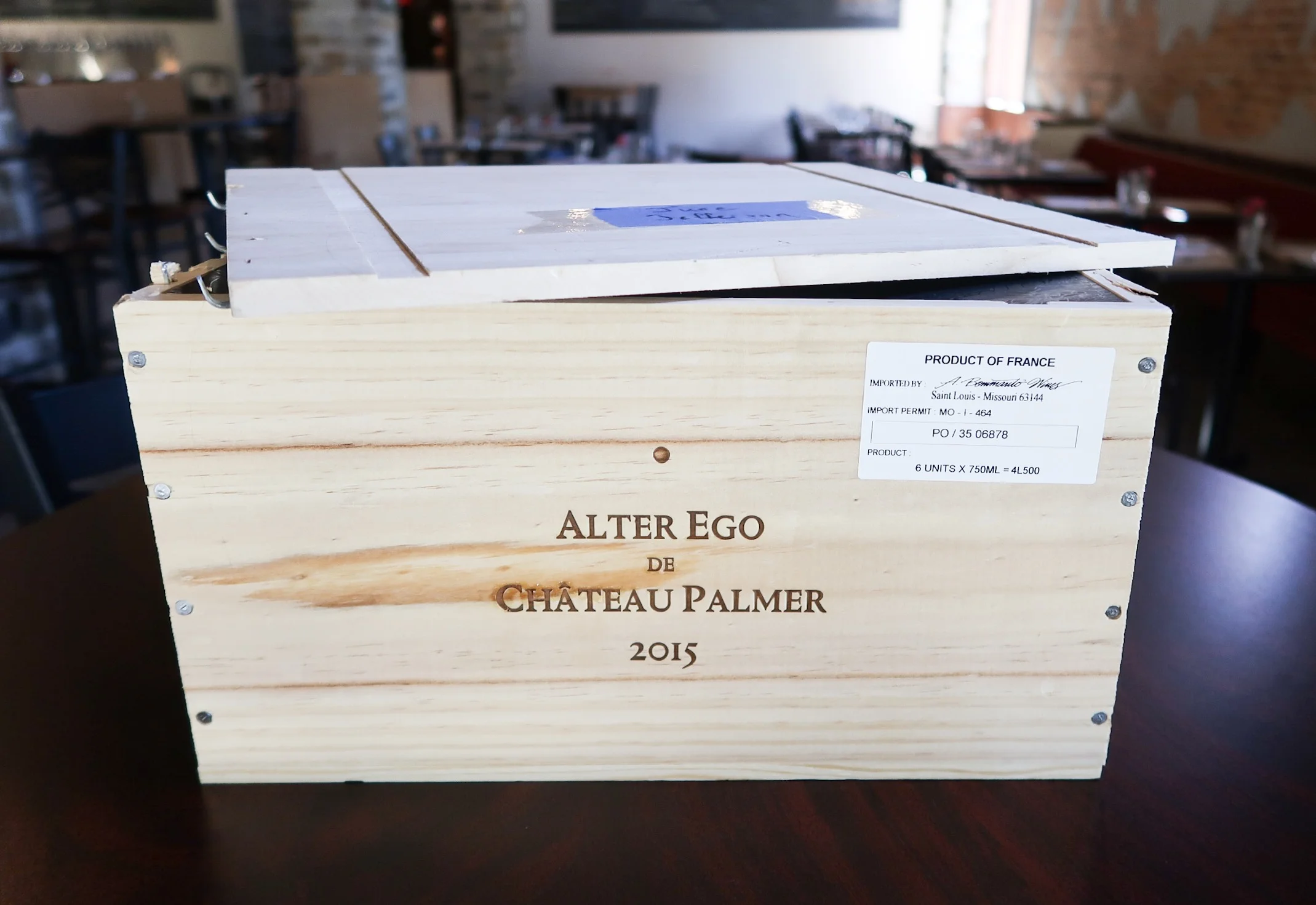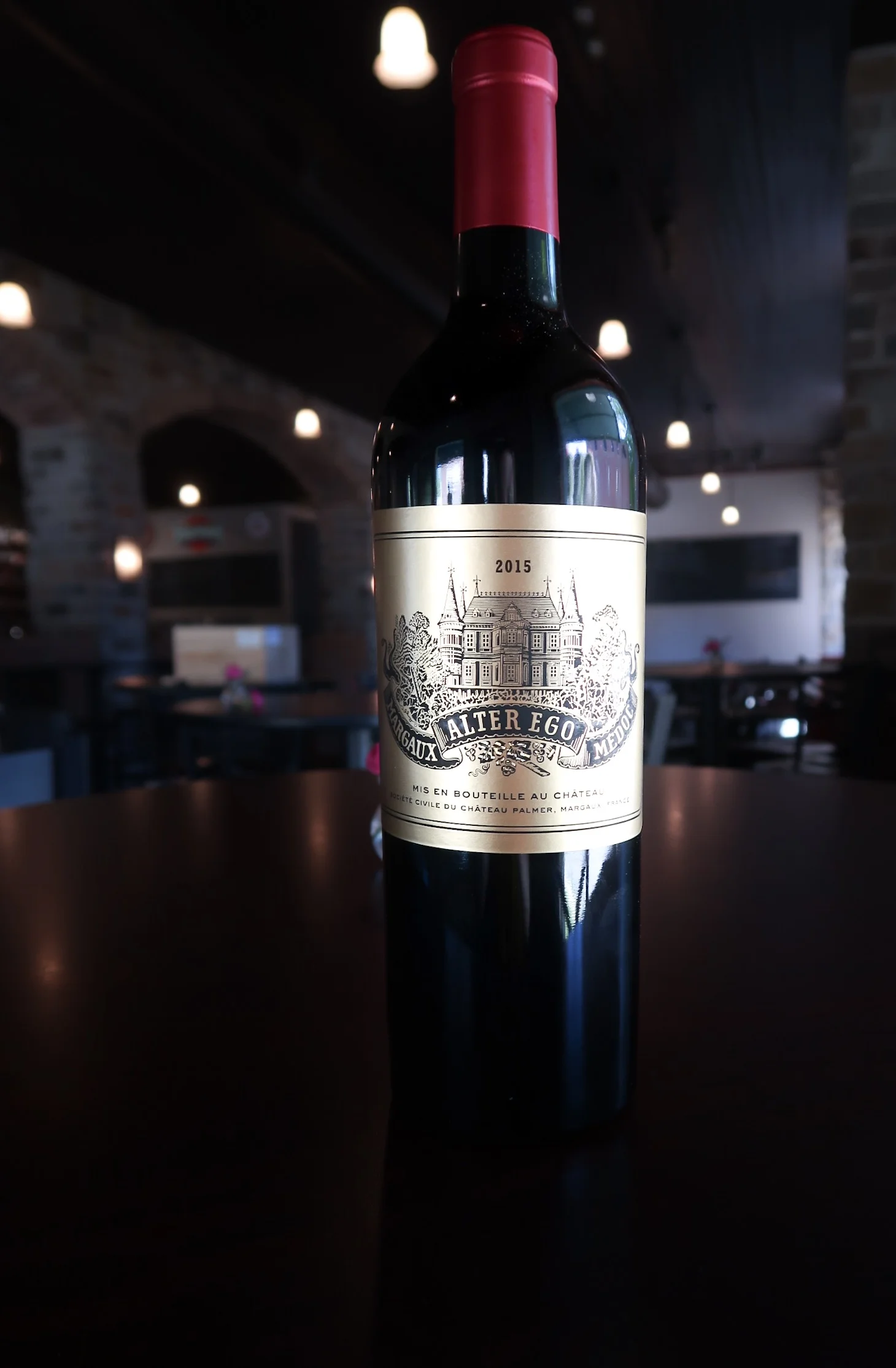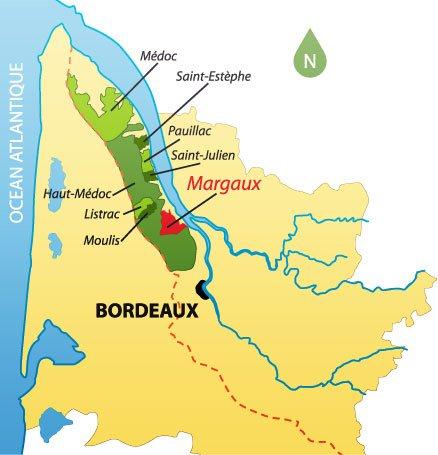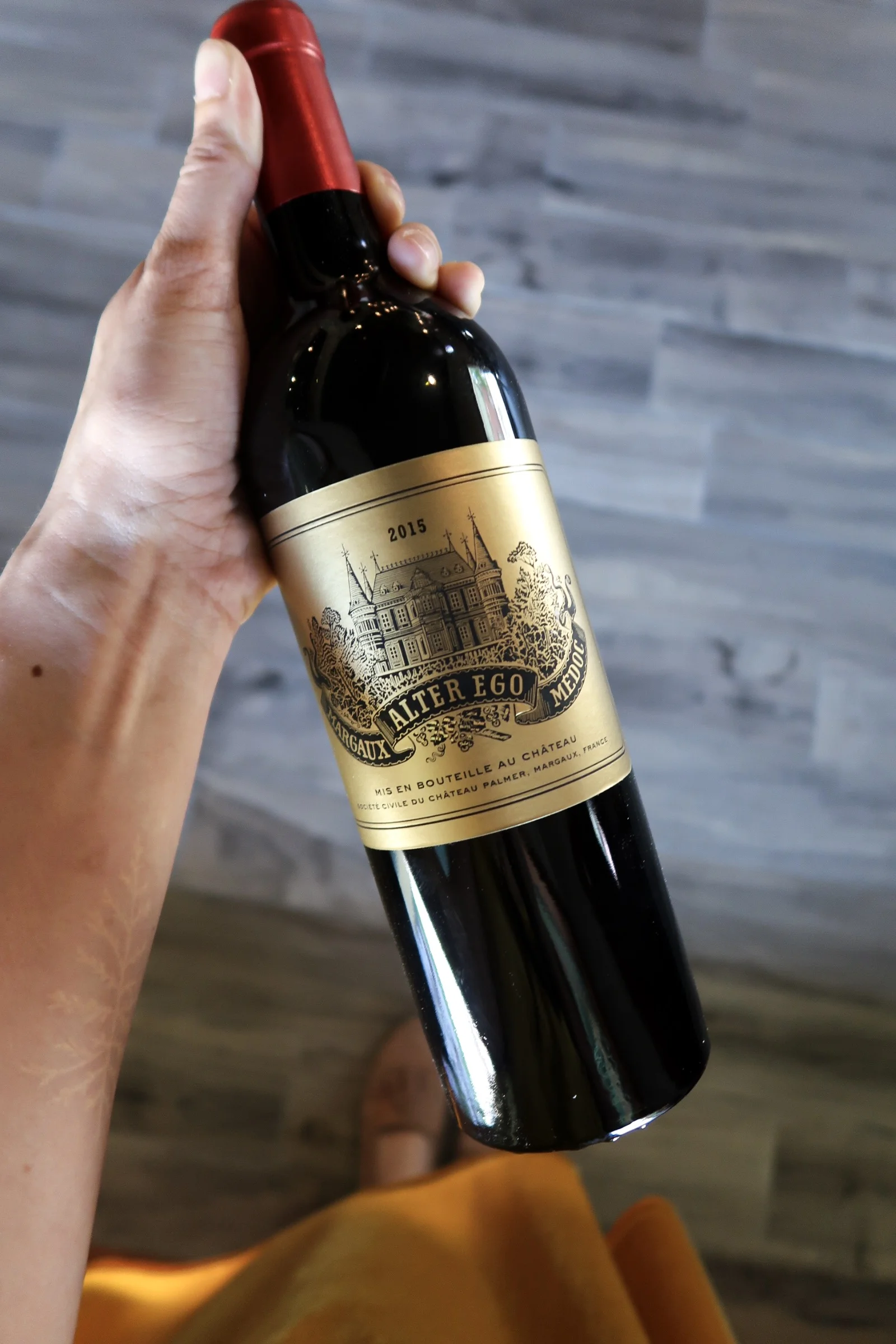A beautifully packaged case of Alter Ego de Palmer 2015 at Just A Taste.
Chateau Palmer
July marks a special moment in time for Just A Taste, and for me in general. We will be celebrating our 4th year of business, and I personally will be taking a pilgrimage through several French wine regions. I thought it best to provide an exquisite bottle from somewhere I will be visiting, but there was one problem: how do you select only one wine from so many incredible offerings. As I was sorting through the endless options, I had my jazz collection on shuffle. A particular track started, and I stopped straight away. I bought this album because it had something to do with wine, but at the time I couldn’t remember. After scanning through the net, the answer to both my questions became clear: in 2009, Chateau Palmer began inviting jazz artists to interpretate upon their wines in the barrel room for each vintage. I found my bottle..
This month, for Just A Taste’s Jefferson Club, I am excited to feature Chateau Palmer’s “Alter Ego de Palmer” 2015 Bordeaux rouge from Margaux.
Alter Ego de Palmer featured for the July 2019 Just A Taste Jefferson Wine Club.
Wine Snapshot: Alter Ego de Chateau Palmer 2015
Producer: Chateau Palmer
Winemakers: Sabrina Pernet, Technical Director; Thomas Duroux, Managing Director
Region: France, Bordeaux, Margaux
Grape Varietal(s): 54% Merlot, 42% Cabernet Sauvignon, 6% Petit Verdot
Viticulture: 8 hectares separate from Chateau Palmer; biodiverse (polyculture) farming methods, but shifted to 100% biodynamic farming in 2014. Certified 100% biodynamic in 2017
Method: hand-harvested grapes; parcels selected for harvest by infrared cameras; advanced sorting table implemented in 2009; each parcel vinified separately; assemblage takes place in early spring; 25%-40% new French oak for 20-22 months
Serving Suggestions: decant for 30 min to 2 hours; 60-65F with roasted, braised, or grilled red meats
Age: drink 2020-2034; this is not a wine to drink young, though decanting helps
Tasting Notes:
Nose: more savory than fruit forward; red plums, dark cherry, chocolate, lavender and spice
Palate: extreme power with velvety texture; richness is balanced with freshness and strength
Finish: lingering tannins carry flavors of cassis, leather, and oak spices
About the Margaux winegrowing region
The Margaux winegrowing region was the first in Bordeaux to be planted to vine, and though it established itself as producing distinguished wines, it has never made better wine than in the past 10 years. The Romans first planted grapes in this area around the time Christ lived, which was unusual for the “left bank” of the Gironde, as much of the land was still under marsh. The raised areas of Margaux allowed for small amounts of viticulture, and it eventually earned a deep reputation for producing superior wines. Jump ahead into the 18th and 19th centuries and Margaux truly began to show this superiority.
During the late 18th century and mid-19th century, Margaux established itself as a leader amongst the villages of Bordeaux. Its reputation was widely known enough that Thomas Jefferson, the namesake of this wine club, visited several estates in the region, including what would become one of the First Growths of the Medoc, Chateau Margaux. In fact, Jefferson actually attempted the creation of his own classification in 1787. Many of these rankings were “confirmed” in 1855 during the official classification of Medoc. An abundance of Margaux estates were included in this classification, including 5 second growths (Deuxiemes Crus), 10 Third Growths (Troisiemes Crus), which accounted for all but 4 in this category, 4 Fourth Growths (Quatriemes Crus), and 2 Fifth Growths (Cinquiemes Crus). It is the only village to boast estates in every category and has the most number of Third Growths as well as the greatest number of classified growths overall, showing the general quality of the land.
Courtesy of The Wine Cellar Insider.
Jump forward into the 21st century, and the chateaus of Margaux are undergoing a renaissance. Many of the estates have begun modernizing efforts in their cellars and are employing more sustainable efforts in their vineyards. According to wine experts like Jeff Leve, creator and writer of The Wine Cellar Insider, Margaux is now producing wines better than ever in its history. In fact, in 2015, it is believe that Chateau Palmer created the best wine in all of Bordeaux.
The winegrowing region of Margaux primarily sits upon a plateau of gravel, but the region is so large there is a wide diversity of soil types and terroir. Here, you can find gravel, limestone with pebbles, and a small amount of clay. Estates will tend to plant Cabernet Sauvignon along sites with gravel, which drains well and helps retain heat to ripen the grapes, whilst planting the easily ripening Merlot on the more clay-saturated soils. The more southern location within the Medoc makes this the warmest region and often the earliest to be harvested. Combine this with the good drainage provided by gravel gives Margaux wines their elegance and intense floral character.
Margaux wines are often described as powerful yet sensitive, and my favorite description is that of an “iron fist in a velvet glove.” Because of its unique geographical characters, the wines from Margaux are often powerful yet elegant with ample floral and savory aromatics and a velvety texture. The blend typically highlights a balance between Cabernet Sauvignon and Merlot, and in certain vintages, producers opt to favor Merlot.
About Chateau Palmer
Hold onto your bottle of Alter Ego de Palmer, if you can!
Chateau Palmer’s history began with that of Chateau d’Issan, a popular Third Growth in Margaux. It was one of the oldest wine producing estates in all of Bordeaux, with evidence of vinification since 1152, as this wine was served during the marriage of Eleanor of Aquitaine and King Henri II. By the early 1800’s, what is now Chateau Palmer was partitioned off and sold to Colonel Charles Palmer and renamed Chateau Palmer.
Over time, the estate changed hands several times until its current owner, Borie Manoux, acquired the estate. However, during each exchange of ownership, the underlying principle of Chateau Palmer has been that of supreme quality. Over the past 20 years, Chateau Palmer has seen a huge investment in modernization, based on the principle of producing superior wines.
In the late 1990s, Chateau Palmer invested significant funds to modernize their fermentation room and cellar. Today, all of the plots at Chateau Palmer have the advantage of being vinified separately in temperature-controlled vats to capture the character of each unique microclimate. From there, each vintage is matured together and gradually fed by gravity until they reach their ultimate resting place. Additionally, they employed the use of optimal sorting equipment both within the vineyards and crush pad.
Since 2008, Chateau Palmer began experimenting with biodynamic farming. Initially, they found the results to be inconclusive in the overall quality of the wines, but they couldn’t help to notice how much healthier their vines seemed. With slight changes, and a more focused approach to visualizing their vineyards as a living ecosystem, they progressed to 100% biodynamic farming in 2014.
One final note of interest, particularly to this semi-professional trumpet player, Chateau Palmer began a unique program entitled “Hear Palmer.” Each year in March, shortly after assemblage of the previous year’s vintage, Palmer invites notable jazz artists to improvise on the character of that vintage. Since our understanding of taste in wine is not far from that of music, I was extremely fascinated by this unique endeavor. Give the 2015 vintage a listen while enjoying your bottle and see if you agree.
“Above and beyond the quality of the wines, I particularly appreciate the mentality here. It is the realization that we need to work towards a new world, one that is both more responsible and more sustainable. That vision is unique.”
